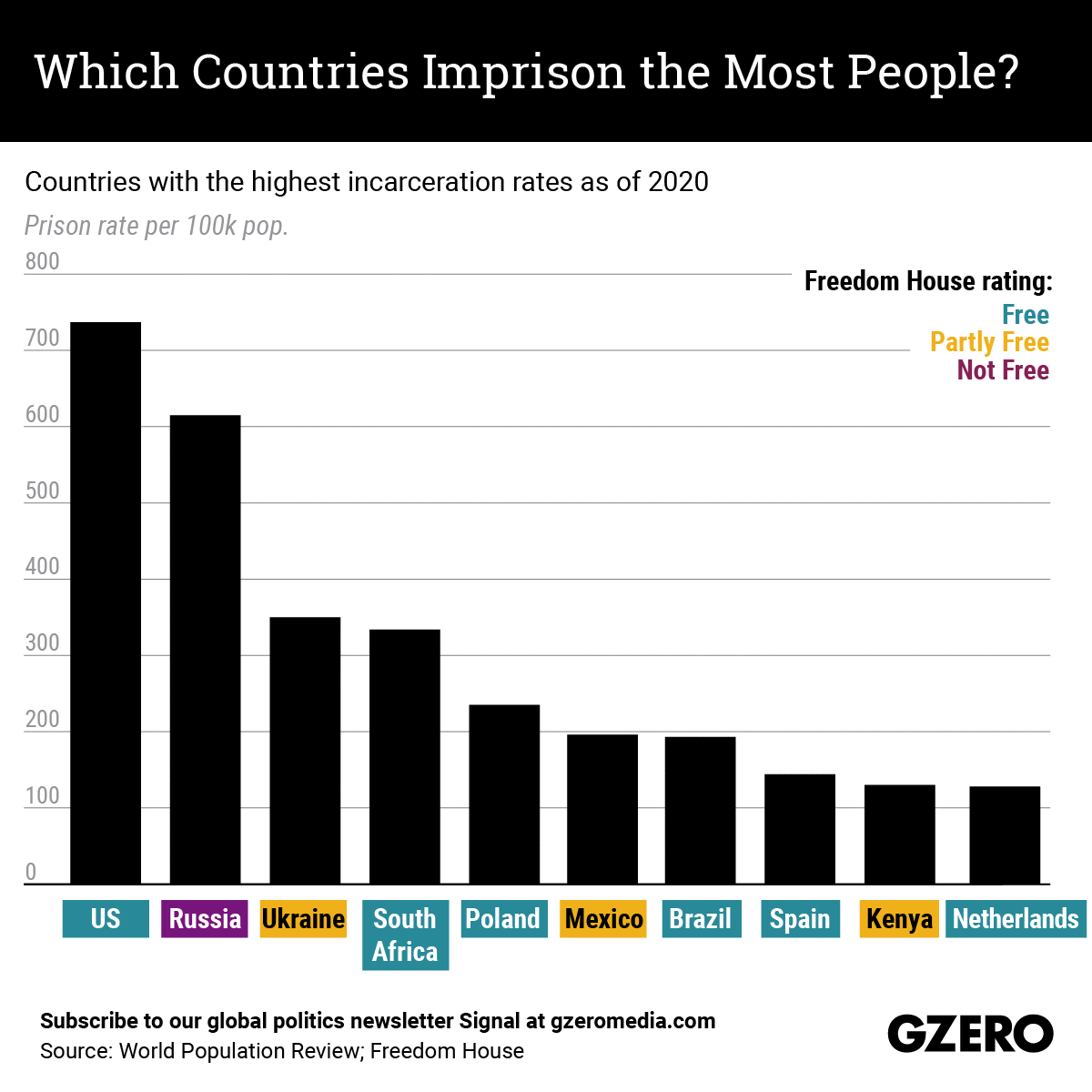The Graphic Truth: Which countries imprison the most people?
The killing of George Floyd by police in Minneapolis has again thrown a harsh light on abuses within the US criminal justice system. One area of focus is the uniquely American phenomenon of mass incarceration, which disproportionately affects people of color. The United States has long held the dubious distinction of having both the world's largest prison population and the highest per-capita prison rate – and by a long shot. Despite making up just five percent of the world's population the United States accounts for around 25 percent of the world's entire prison population. So which countries have the highest incarceration rates and what kinds of regimes are we talking about? We take a look at the prison data here, and used Freedom House's global freedom index to classify the regime types that we find among the world's leading incarceration nations.
